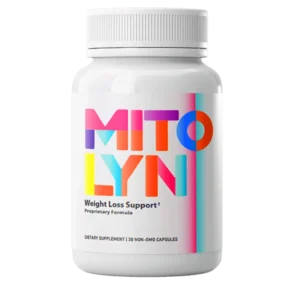Low FODMAP Diet
Irritable Bowel Syndrome (IBS) can be a debilitating condition that affects your everyday life. One potential solution gaining traction is the Low FODMAP diet—a specialized eating plan designed to alleviate the symptoms of IBS. This diet involves careful management and reduction of specific carbohydrates that are believed to exacerbate IBS symptoms. Let’s explore how this dietary approach can serve as a beacon of hope for those seeking relief.
Understanding IBS and the Role of Diet
Irritable Bowel Syndrome (IBS) is a chronic gastrointestinal disorder that affects the large intestine. It’s characterized by a group of symptoms, including abdominal pain, bloating, gas, diarrhea, and constipation. These symptoms can fluctuate over time, making IBS a challenging condition to manage. Despite its prevalence, the exact cause remains unknown, but factors like stress, hormonal changes, and previous gut infections can trigger or worsen symptoms.
Diet plays a significant role in managing IBS. What you eat directly affects your gut health and symptom severity. Specific foods are known to trigger IBS symptoms. Foods high in fat, caffeine, alcohol, and some artificial sweeteners are common culprits. Moreover, people with IBS often have a unique sensitivity to certain carbohydrates, known as FODMAPs, which stands for Fermentable Oligosaccharides, Disaccharides, Monosaccharides, and Polyols. These are types of carbohydrates that are not absorbed well in the small intestine.
When these FODMAPs reach the large intestine, they become food for bacteria, which ferment them. This fermentation process can lead to excess gas production and cause bloating, pain, and changes in bowel habits—all classic IBS symptoms. Thus, the Low FODMAP diet was developed as a way to identify and eliminate these problematic carbs. It involves a phased approach: eliminating high FODMAP foods, then gradually reintroducing them to identify which ones cause symptoms.
The Low FODMAP diet is more than just a list of forbidden foods; it’s a personalized approach to managing IBS. By understanding which foods trigger symptoms, individuals can make informed choices that alleviate discomfort and improve quality of life. While the diet can be complex, resources and guidance are available to help you navigate it successfully. This method’s impact on IBS management highlights the powerful connection between diet and digestive health.
For those seeking additional strategies for health improvement, exploring nutritious superfoods can also be beneficial for overall well-being and energy levels. Integrating dietary adjustments with a broader health regimen can empower you on the path to relief from IBS symptoms.
The Science Behind the Low FODMAP Diet
The Low FODMAP diet is based on a scientific approach to managing Irritable Bowel Syndrome (IBS). Understanding the diet begins with the carbohydrates it includes. FODMAPs are a group of short-chain carbohydrates that are poorly absorbed in the small intestine.
The acronym FODMAP stands for Fermentable Oligo-, Di-, Monosaccharides and Polyols. Here’s a detailed breakdown:
- Oligosaccharides: Found in foods like wheat, rye, onions, and garlic. They include fructans and galacto-oligosaccharides (GOS).
- Disaccharides: Lactose is the major disaccharide. It’s found in milk, yogurt, and soft cheeses. Many adults have a reduced ability to digest lactose.
- Monosaccharides: This includes fructose, which is found in honey, apples, and many fruits with a high fructose-to-glucose ratio.
- Polyols: Sugar alcohols like sorbitol and mannitol, found in fruits and artificial sweeteners, are included here.
FODMAPs tend to linger in the gut because they aren’t absorbed efficiently. Their presence leads to two key issues that trigger IBS symptoms like gas, bloating, and discomfort: they draw water into the intestines and are fermented by gut bacteria.
When FODMAPs reach the colon, they become a food source for bacteria, which ferment these carbohydrates. This fermentation process produces gas, leading to the sensation of bloating and physical discomfort. Additionally, the poorly absorbed sugars can create osmotic effects, increasing water content in the intestinal tract, which might lead to diarrhea.
By reducing the intake of these carbohydrates, IBS sufferers often experience an alleviation of symptoms. The Low FODMAP diet essentially works by limiting foods that the gut bacteria can ferment, thereby reducing the production of gas and associated symptoms. While the scientific principles behind the Low FODMAP diet are robust, it’s essential to combine dietary adjustments with other lifestyle modifications for holistic health improvements.
For those interested in learning more about food choices and nutrition labeling to assist in managing such diets, see our guide on understanding food labels and nutrition facts.
Implementing the Low FODMAP Diet
Transitioning to a Low FODMAP diet involves understanding which foods to avoid and finding suitable substitutes. Foods high in FODMAPs that typically aggravate IBS include certain fruits like apples and pears, vegetables such as onions and garlic, legumes, and dairy products containing lactose.
To ease into the diet, begin by identifying and eliminating high FODMAP foods. Instead, choose low FODMAP options like bananas and berries for fruits, carrots and spinach for vegetables, and lactose-free or plant-based milk. Consider using garlic-infused oil in place of raw garlic to retain flavor without triggering symptoms.
Step-by-Step Transition
- Elimination Phase: Start by removing all high FODMAP foods for 2-6 weeks. This phase helps to discern which foods cause problems.
- Reintroduction Phase: Gradually reintroduce high FODMAP foods one at a time. Monitor your symptoms carefully to identify which foods you can tolerate and which you cannot.
- Personalization Phase: Develop a tailored eating plan based on your body’s reaction to different foods during reintroduction.
Common Challenges and Solutions
Grocery shopping on a Low FODMAP diet can be daunting. To tackle this, create a list of allowed foods before heading to the store. Opt for fresh produce, as prepackaged foods often contain hidden high FODMAP ingredients.
Meal planning is crucial. Allocate time each week to prepare meals that incorporate only low FODMAP ingredients. Consider batch cooking to save time and ensure you always have suitable meals on hand.
Eating out requires caution. Call ahead to restaurants to inquire about menu options. Explain your dietary restrictions clearly to the staff to prevent unintended FODMAP consumption.
Professional guidance is invaluable when navigating this diet. Working with a dietitian ensures your nutrition is balanced, reducing the risk of nutrient deficiencies. They can offer personalized insights and track your progress effectively.
For more guidance on healthy eating with specific dietary restrictions, explore our article on gluten-free diet management.
Mitolyn Product
The Benefits and Potential Challenges
Adopting a Low FODMAP diet offers significant benefits for individuals with IBS, providing much-needed relief from distressing symptoms. One of the primary advantages is the reduction of symptoms such as bloating, gas, abdominal pain, and irregular bowel movements. By systematically eliminating foods high in fermentable carbohydrates, many people experience a notable improvement in their quality of life.
Many report that their energy levels increase as the diet progresses, enabling them to participate more actively in daily activities and social engagements. The diet empowers individuals to take control of their digestive health, fostering a greater sense of well-being. However, while the benefits are compelling, integrating the Low FODMAP diet into one’s lifestyle does come with its challenges.
Dietary restrictions can be particularly daunting, as they often eliminate many common and enjoyable foods. People may find themselves missing out on certain food experiences, and this can pose a challenge during social gatherings or dining out. Planning meals ahead and researching food options at restaurants can help alleviate some social pressures associated with sticking to the diet.
Maintaining nutritional balance is another potential hurdle, as the diet requires careful management to ensure all essential nutrients are consumed. Consulting with a dietitian is advisable to craft a meal plan that meets individual nutritional needs while adhering to Low FODMAP guidelines. It’s also crucial to gradually reintroduce FODMAPs to identify personal food triggers, which aids in crafting a sustainable, long-term eating plan.
For those who may struggle with meal planning, focusing on whole, unprocessed foods can be a helpful strategy. Exploring new ingredients and recipes can not only enhance culinary skills but also keep meals exciting.
A useful resource could be our page on understanding food labels and nutrition facts, which can assist in identifying suitable products while shopping. With persistence and mindful preparation, the Low FODMAP diet can be effectively integrated into daily life, offering a pathway to relief and improved quality of life for those grappling with IBS.
Final words Low FODMAP Diet
The Low FODMAP diet offers a strategic approach to alleviating IBS symptoms and improving your quality of life by minimizing digestive discomfort. If you’re navigating this journey, I encourage you to explore more informative resources and products that can assist you in maintaining a healthier lifestyle.




